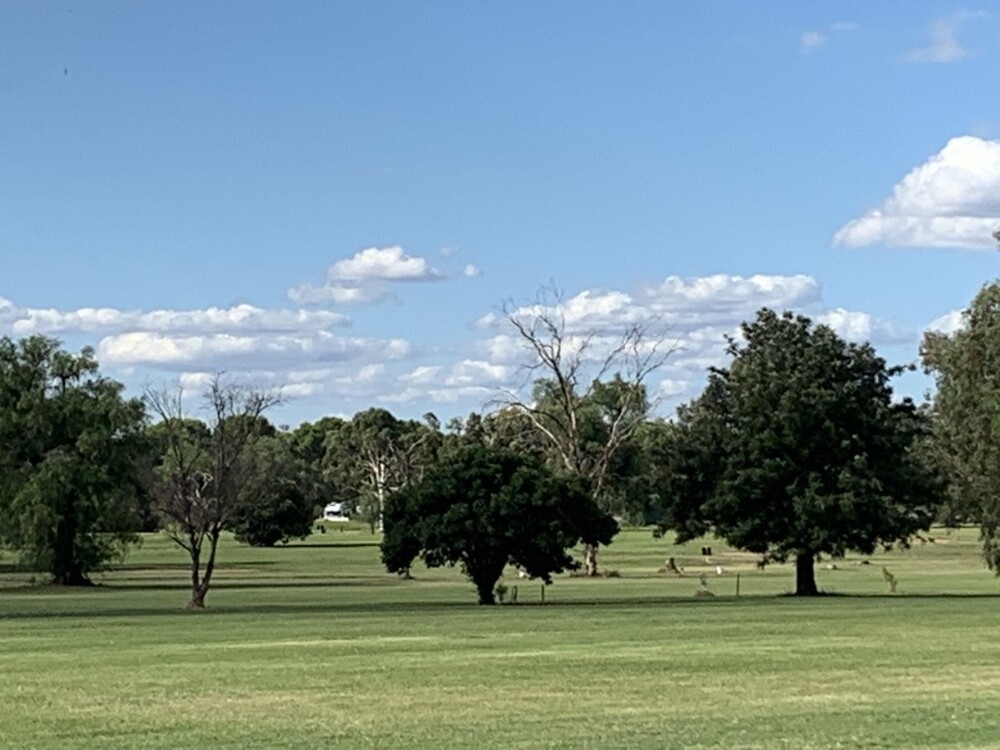Spray drift debate continues at Narromine
Sharon Bonthuys
24 May 2023, 7:40 AM
 These spots on foliage on a property near Trangie are evidence of spray drift, according to the Community Overspray Group.
These spots on foliage on a property near Trangie are evidence of spray drift, according to the Community Overspray Group. Representatives from the NSW Environment Protection Authority (EPA) visited Narromine on May 16 for further engagement with stakeholders about pesticide spray drift and monitoring.
Executive Director of Regulatory Operations Carmen Dwyer and Executive Director of Regulatory Practice David Fowler met with members of the Stop Off-Target Spraying group, the Community Overspray Group (COG), Landcare, and other community members in Narromine to discuss the EPA’s approach to reducing incidents of spray drift, including the ongoing pesticide monitoring and assessment program in the central west.
Spray drift is the airborne movement of chemicals and pesticides outside the targeted crop application areas. It occurs across multiple crop types and at various times of the year.
Bruce Maynard, the 2022 Bob Hawke Landcare Award recipient and a local resident farmer and landholder, is convenor of the now-statewide COG. Mr Maynard represented the COG at the meeting and told the Western Plains App that although the EPA wanted to discuss future monitoring, his organisation believes the agency already has evidence from existing monitoring activity.
“It still picked up the signals of what we’re being exposed to and at what time of the year. They’ve had plenty of information provided to them to know what the symptoms [of overspray pollution] are,” Mr Maynard said.
He believes the EPA “continues to dodge away” from responding to chemical overspray pollution notifications but says there is more scrutiny now following the formal release of documents late last year by the EPA and other agencies as requested by Greens Upper House member, Sue Higginson MLC. Some 712 documents were returned in response to that request relating to spray drift and chemical overspraying in the Narromine Shire. Most of the released documents were from the EPA.

ABOVE: Trees on the Narromine Golf Course have been impacted by spray drift over the course of several years, according to the COG.
“If we don’t keep ringing the bell then of course they’ll let it go,” Mr Maynard said.
“[We were asked] ‘what would a future monitoring program look like to you?’ and [we responded] you’ve got to address what you already know. You have the information there, and that’s been ongoing for the past couple of years.”
Mr Maynard is concerned that the community is not being properly informed of spray drift incidents, impacts, and action taken in response to complaints.
An EPA spokesperson said the organisation continues to engage with landholders, peak industry bodies, community members and agronomists to better understand the challenges and impacts associated with spray drift and determine how to work together to protect the environment.

ABOVE: These spots are found on both green and fallen leaves.
Pesticide spray drift in regional NSW remains the subject of a targeted, ongoing education and compliance campaign by the EPA targeting agricultural areas with high rates of pesticide use.
EPA officers visited 50 properties in the Walgett, Moree Plains and Narrabri local government areas in February, followed by more than 30 properties in the Warren and Narromine areas in March to educate landholders with the aim of reducing future incidents of spray drift. Attention has moved to south-west NSW this month with EPA visits to properties at Carrathool, Griffith, Murrumbidgee and Leeton.
In NSW, it is illegal to use pesticides in a way that could injure people or cause damage or harm to properties, plants and animals that are not the target pest species.
Deliberate misuse of pesticides is a serious environmental crime. Those found to have wilfully or negligently caused damage, harm or injury through pesticide misuse can face fines of up to $120,000 for an individual and $250,000 for a company under the Pesticides Act 1999, according to the EPA.
“The EPA investigates all reports of suspected pesticide misuse made to us via the 24-hour Environment Line on 131 555,” the agency spokesperson said.




